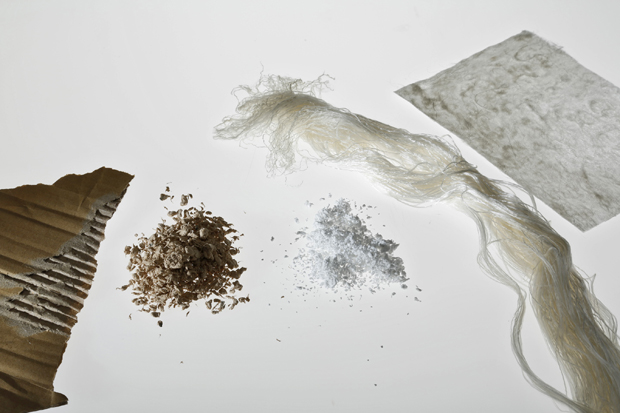
EcoWipes invests in Trützschler and Voith technology
VTT Technical Research Centre of Finland has developed a process that it says enables recycled paper and cardboard to be used as a raw material for cost effective nonwovens. Hygiene and home care products, such as nappies, sanitary towels and cleaning cloths, are among the many items that the researchers say can be manufactured from the biodegradable nonwovens.

20th March 2013
Innovation in Textiles
|
Finland
VTT Technical Research Centre of Finland has developed a process that it says enables recycled paper and cardboard to be used as a raw material for cost effective nonwovens. Hygiene and home care products, such as nappies, sanitary towels and cleaning cloths, are among the many items that the researchers say can be manufactured from the biodegradable nonwovens.
“The manufacturing costs of cardboard-based nonwovens are around 20% lower than for nonwovens produced from wood raw materials. The forest industry will be among those likely to benefit from new business opportunities opened up by nonwovens based on recycled paper and cardboard,” the VTT team says.
The team headed by Research Professor, Ali Harlin points out that nonwovens are essentially consumer goods that once used will end up in a landfill site along with other community waste and that in the metropolitan area alone, an estimated 10,000 tonnes of nappies and sanitary towels are disposed of each year.
It adds that the principle raw material in nonwovens manufacture is biologically non-degradable polyester and that up to now, market entry for bio-based nonwovens derived from wood has stalled because of prohibitive production costs.
“Now for the first time we can make use of recycled paper and cardboard as a nonwovens raw material,” says Ali Harlin, Research Professor at VTT.

“The new process means that bio-based nonwovens are now more competitive on price in comparison with plastic-based products. The manufacturing costs of cardboard-based nonwovens are around 20% lower than for nonwovens produced from wood raw materials. New business opportunities should open up fairly rapidly, since the technology required for manufacturing nonwovens from recycled materials is already in place.”
According to Harlin, every year Europe generates around 60 million tonnes of recycled paper, of which cardboard makes up around 40%. He points out that the demand exists for new applications and technology for exploiting recycled paper due to the EU’s objective of raising the proportion of recycled paper to 70%.
“The method developed by VTT could extend future possibilities for re-use, particularly in the case of cardboard, which is more cost-effective as a raw material than fine paper,” the researchers say.
Cleansing the cardboard of filler material, lignin and hemicellulose is a key part of the nonwovens manufacture. VTT has matched several fibre-processing methods in the preparation of dissolving pulp to assist in obtaining pure cellulose from the recycled cardboard. The dissolving pulp produced in the research project was regenerated using VTT’s patented carbamate technology, which is said to be safer and more environmentally friendly than the traditional viscose process. The nonwovens were manufactured with foam forming technology that VVT says uses little water.

Business intelligence for the fibre, textiles and apparel industries: technologies, innovations, markets, investments, trade policy, sourcing, strategy...
Find out more